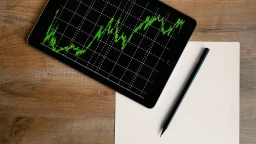Find Your Trading Style

Finding your trading style is a critical step in becoming a successful trader, as it aligns your trading decisions with your personality, time availability, and risk tolerance. Trading isn't one-size-fits-all; understanding different styles will help you trade with confidence and motivation.
What Is a Trading Style?
A trading style defines how you enter and exit trades, the timeframe you hold positions, and how hands-on you are in the market. Choosing the right style impacts your potential profits, risks, and the amount of time you’ll dedicate to trading.
Common Trading Styles
Day Trading: You buy and sell assets within the same day to capitalize on short-term price movements. It’s fast-paced, requiring constant focus and quick decisions. This style suits those who can monitor markets intensively and handle stress but must manage higher transaction costs and short-term risks.
Swing Trading: You hold trades for several days to weeks, aiming to capture trends and price "swings." This style offers more flexibility and less time commitment than day trading while requiring patience to handle overnight market risks - a good fit for beginners balancing trading with other responsibilities.
Position Trading: This long-term style involves holding positions for weeks, months, or even years based on fundamental and technical market analysis. It requires patience and a broad market understanding, with less frequent trading but exposure to wider market fluctuations.
Scalping: A highly active style involving numerous trades within seconds or minutes to earn small profits repeatedly. It demands lightning-fast execution, solid discipline, and is suitable only for experienced, focused traders.
Why Finding Your Style Matters
Your trading style should reflect your schedule, emotional stamina, and financial goals. For example, if you can’t watch the markets all day, swing or position trading might be better than day trading. The right style minimizes stress and maximizes your learning curve while preserving your capital.
Getting Started with Your Trading Style
Self-Assessment: Consider your daily schedule, risk tolerance, and how much time you want to spend on trading.
Education: Learn the technical and fundamental analysis tools best suited to your style.
Practice: Use demo accounts to simulate trading and test various styles without real money risk.
Risk Management: Use tools like stop-loss, limit orders, and GTT orders to automate trades and limit losses no matter the style.
Adapt: As your skills grow, your style might evolve - be ready to adjust strategies based on experience and market conditions.
Also Read: What Are Stocks? Easy Stock Market Basics
Finding your trading style is your first step toward trading success. It empowers you with clarity, reduces emotional trading mistakes, and builds confidence. Whether you choose fast-paced day trading or patient position trading, starting with a well-matched style transforms trading from intimidating to achievable.









